#Hotel Martinique
Explore tagged Tumblr posts
Text
Kaysha x Hotel Amyris, Martinique. 08.05
Kaysha x Hotel Amyris, Martinique. August 2005

View On WordPress
0 notes
Text

#nycc 2023#nyclife#martinique#hotel#louis vuitton#scarves#celebrities#photography#kurt geiger#jewelry
0 notes
Photo

Powder Room Bathroom Los Angeles Ideas for remodeling a tropical powder room
0 notes
Photo

Inspiration for a tropical powder room remodel
#Inspiration for a tropical powder room remodel martinique wallpaper#banana leaf#indochine#beverly hills hotel#wallpaper#banana leaf wallpaper#martinique
1 note
·
View note
Text


Views from the Marina Hotel, 1990. South towards the Tropicana, and north: Martinique mall, motels, Aladdin, Dunes, and beyond. Photos by Bruno Werndl.
63 notes
·
View notes
Text
Some neat finds
I can't remember if I got this at an antique or a thrift shop. I guess it doesn't really matter.
First, this extremely worn 1902 copy of The Countess of Monte-Cristo. Gosh, I think it's supposed to be dark teal or something similar, but mine is a sad grayish-brown. Mistakenly attributed to Alexandre Dumas, it was in fact written by Jean Charles du Boys. Therefore, I consider it the oldest piece of fanfiction in my possession.

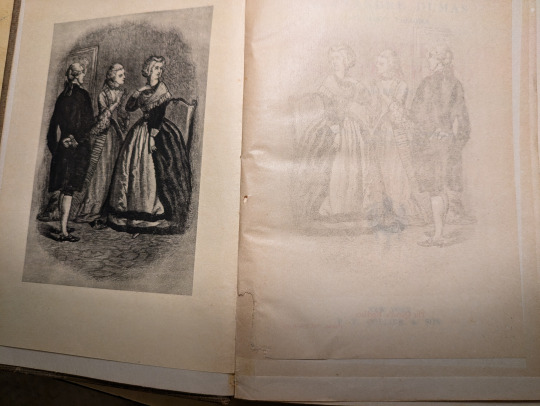

I think it was inside this book that I found some postcards and one drawing. Or they might've fallen out of the Jane Eyre? Eh, things got all jumbled up in transit.
First postcard is from someone named Emila (? I can't tell) to Mrs. AG Alden in Eaton Rapids, Michigan. On the front is sepia picture a man and two women sitting outside an unfinished wall of a house. The man is holding what looks like a baby less than a year old and the middle woman is holding a slightly older child. The middle woman's right arm is blurry, maybe because she had to deal with the fussy baby. She wrote:
"March 26, 1914
Dear Dora,
You may address me now at 493 (?) Connecticut St Rochester Pa.
I thought perhaps you would like a visit from the Marvins (?) so here we are as we looked in January. A friend took it when we were visiting (something scribbled out maybe?) her house. Hope you are well. Emila"
And smaller, sideways paragraph at the top says: "Would like to have that little apron when I get to town." I loved that afterthought.
At my first glance at their clothes, I assumed the pic was much older, but then I read the year and realized this was the kind of stuff Anne Shirley would've been wearing. Then again, I'm not well versed in fashion eras.


Second postcard is short but sweet.
The front is a drawing of The Martinique, a hotel in NYC that is still there today. It was written from "Daddy" to "Master Alvin Fresh" at an address I can no longer find in Atlanta. (I googled a bit. There is a mention of a T. Alvin Fresh at a metro Atlanta Holocaust museum, who was a sound engineer or something for the Nuremburg trials and retired in Georgia, but his years don't add up to be this one, I think.)
He said:
"Dear baby:-
I hope you are well now and will never be sick anymore. Be a good boy and daddy will bring you a toy
Daddy"
It sounds very casual but then I remembered how different things were a hundred years ago (the post stamp says 1924). This would've been only a few years after the Spanish Flu wiped out hundreds of thousands in the US, and well before things like the polio, flu, or other vaccines were given to civilians. Being away from home when your baby was sick was no joke.

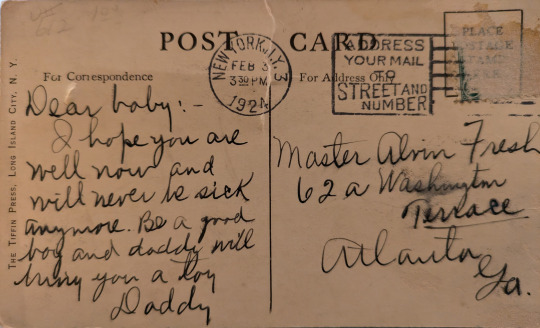
And then here's a presumably old doodle of a mom giving her kid lots of kisses

Is the mom wearing a corset or something? Or maybe it was just the color of the dress. Either way, I think it's adorable.
#thrifting#antique store#vintage photography#vintage#vintage postcards#antique books#antique finds#1910s#1910s fashion#1920s#vintage america#thrift finds#this is neat#i think they're neat
2 notes
·
View notes
Photo

By the mid-1950s, the singer Harry Belafonte had taken the lead role in an Oscar-nominated film, Carmen Jones; reached No 1 with his album Calypso, which helped find a mainstream audience for that musical style and became the first album ever to sell more than 1m copies; and headlined major venues around the US.
However, Belafonte found himself unable to use the main entrance to the Las Vegas hotels where he regularly performed – nor could he eat, stay or gamble in them. On tour in the south, he faced an evening curfew because of his skin colour. When he starred with Joan Fontaine in the then controversial film about an interracial relationship, Island in the Sun (1957), he was advised not to mention Fontaine in press interviews for fear of suggesting a romance between them. He learned that the power and respect that usually accompany fame and fortune could be largely illusory as far as black entertainers were concerned.
The enduringly handsome Belafonte, who has died aged 96, had great success not just as a honey-voiced singer and a compelling actor, but also as a passionate and erudite campaigner for civil rights.
The seeds of his ambition and his social conscience were sown by his tough childhood. Harold Bellanfanti was born in Harlem, New York, and raised in a cramped apartment. His parents came from the Caribbean. His father, also called Harold, had been born in Martinique and was an itinerant ship’s cook; his mother, Melvine, born in Jamaica, worked as a domestic servant.
When Harry was six, his father left the family.
The boy was sent by his mother to study in Jamaica, where his American accent made him feel like an outsider at school. In Jamaica, he loved visiting the banana markets; many years later, after his international success with The Banana Boat Song (Day-O), he observed: “Not by chance did that song become my signature. I knew of what I was singing.”
After a few years, Belafonte returned to New York, dropped out of high school and entered the navy. It was 1944 and he was 17. Two strokes of good fortune changed his life. First, he met Marguerite Byrd, a young teacher from a black middle-class family, who four years later became his wife. He abandoned the menial jobs he had been doing and, thanks to the GI Bill of Rights, became a student and enrolled at Erwin Piscator’s drama school, where his peers included Marlon Brando and Sidney Poitier. With the latter, Belafonte trained at the studio theatre of the pioneering American Negro theatre in Harlem.
Except for some off-Broadway shows, he found little work as an actor and began singing, mainly in jazz clubs, such as the Village Vanguard and the Royal Roost in New York, earning a reasonable living for a couple of years. He also began recording, including some of his own songs. Tiring of the routine, in 1950 he opened a small restaurant, the Sage, in Greenwich Village, entertaining customers with folk songs. This, and his attachment to calypsos (he became known as “the Calypso King”), changed his style, and he was soon performing in more prestigious venues. He had signed a deal with Jubilee Records in 1949, and his records began to sell. Throughout his career, he recorded dozens of albums, including live concerts at Carnegie Hall, New York.
Belafonte won a Tony award in 1954 for his performance in the musical revue John Murray Anderson’s Almanac. By then, his film career was under way. After playing a headteacher in Bright Road (1953), he was cast in Otto Preminger’s 1954 movie version of the Broadway hit Carmen Jones, opposite Dorothy Dandridge. This all-black adaptation of Bizet’s Carmen, in which both his and Dandridge’s voices were dubbed, was a considerable success.
In 1957, Belafonte had top 10 hits in the UK with The Banana Boat Song and the title track from Island in the Sun, before achieving his biggest recording success with Mary’s Boy Child, which spent seven weeks at No 1 in 1957 and was re-released for the following two Christmases.
He began to appear on television, toured successfully in Europe and recorded several programmes for BBC television, working for a fraction of his normal fee because he enjoyed the extended nature of the shows, which gave him time to develop his performance. He became one of the first major artists to tour with a multiracial band and he integrated black performers into orchestras in prestige venues where the musicians had been exclusively white.
Belafonte and Byrd divorced in 1957, and he married Julie Robinson, the first white dancer to work with the Katherine Dunham company. The breakdown of his marriage had led Belafonte to seek psychiatric treatment, and his psychiatrist’s husband, a stockbroker, subsequently became Belafonte’s agent and manager, replacing Jack Rollins, the man responsible for masterminding Belafonte’s early career.
The 1950s was a period of considerable civil rights activism for Belafonte, who cited his friend Martin Luther King as the dominant influence on his life. When they first met, in 1954, they were in their mid-20s. “His courage was really quite remarkable,” Belafonte recalled. He embraced King’s message of nonviolence and lent his support to protest movements. With King, Belafonte was one of those who planned the 1963 march on Washington.
In the following year, he helped to raise and then personally delivered, with the assistance of Poitier, $70,000 in cash to support the work of the Student Nonviolent Coordinating Committee in Greenwood, Mississippi. Facing hostility from the Ku Klux Klan, the SNCC was striving to register black voters in the region. “In Mississippi’s vicious climate,” Poitier wrote, “the chances of a Klansman taking a potshot at me were actually pretty high.”
A television show, Tonight With Harry Belafonte (1959), brought Belafonte an Emmy, making him the first African American man to win the award. He returned to the screen in The World, the Flesh and the Devil (1959); the story of racial conflict within the science-fiction genre worked effectively. In the same year he made a thriller, Odds Against Tomorrow, with a racial subtext behind the animosity between two criminals.
Belafonte won a Grammy for best folk performance in 1960 for a powerful album of chain gang songs, Swing Dat Hammer. In 1965 he won another Grammy for best folk recording for an album he made with Miriam Makeba, the anti-apartheid activist. But another musical collaboration, with Petula Clark on her TV special in 1968, raised Belafonte’s profile further. During their performance of the song On the Path of Glory, Clark held Belafonte’s arm – much to the objection of an executive from the show’s sponsor, who feared that this show of intimacy between a white woman and a black man would enrage southern audiences. Clark refused to cut the performance from the programme, which had a warm reception when it was broadcast.
Returning to acting in 1970, he played a black angel, sent to earth to help Zero Mostel, in The Angel Levine, which he co-produced. He fared better producing Buck and the Preacher (1972), directed by his co-star, Poitier. The pair’s subsequent film, Uptown Saturday Night (1974), proved less successful.
In the mid-1980s, inspired by the success of Band Aid’s Do They Know It’s Christmas?, Belafonte helped to organise the charity single We Are the World, written by Lionel Richie and Michael Jackson and recorded by an all-star lineup of musicians including Stevie Wonder, Paul Simon and Diana Ross. The song reached No 1 in the US and the UK and won a Grammy. In 1987 Belafonte replaced Danny Kaye as UNICEF's goodwill ambassador; that year he chaired an International Symposium of Artists and Intellectuals for African Children in Senegal.
Having played himself in the satires The Player (1992) and Prêt-à-Porter (1994), Belafonte made a third film for the director Robert Altman, who cast him as Seldom Seen, a gang boss and club owner, in Kansas City (1996), for which Belafonte received the New York Critics Circle award for best supporting actor. Although he had not taken a leading role in a feature film for nearly 20 years, he was sufficiently tempted by the part of the bigoted Thaddeus Thomas in White Man’s Burden (1995), opposite John Travolta. He also joined the cast of Bobby (2006), Emilio Estevez’s film about Bobby Kennedy, whom Belafonte knew in the 60s.
Belafonte belatedly considered entering full-time politics in the Democratic party, but work, social commitments and family took precedence. Among his ongoing social concerns over the years were the National Association for the Advancement of Colored People; a school for emotionally disturbed boys; the prevention of gang violence; and his own Belafonte Foundation of Music and Arts.
He remained a force to be reckoned with, in 2002 likening the then US secretary of state Colin Powell to a slave who “got the privilege of living in the house if you served the master, exactly the way the master intended to have you serve him”. He lent his support to the Occupy movement in 2011, and when asked in a Guardian interview the following year which living person he most despised, he replied: “George W Bush, for his betrayal of America.”
His autobiography, My Song (2011), was followed by a documentary about his life, Sing Your Song. His final film role was a cameo as a veteran activist in Spike Lee’s BlacKkKlansman (2018).
In 2008, following divorce from his second wife, he married Pamela Frank. She survives him, along with the two daughters of his first marriage, and the son and daughter from his second.
Harry Belafonte was one of the most important and influential campaigning black musicians in American history, though for the public at large he was better known for most of his career for the relaxed, middle-of-the-road image that he projected through his calypsos.
His true character was very different, for in the 60s he used his wealth, fame and organisational skills to bolster the civil rights campaign in the US and bring American attention to the apartheid regime in South Africa, playing a crucial role in promoting the careers of the South African musicians Miriam Makeba and Hugh Masekela.
He was always a smartly dressed figure with a powerful physical presence and a glorious husky growl, but was also a man of considerable bravery. He took part in such major events as the 1965 march from Selma to Montgomery – where he made speeches, but had to leave town lying on the floor of a car, along with Peter Yarrow of Peter, Paul and Mary, to escape the Klansmen.
But the suave crooner of calypsos was regarded with suspicion by black power leaders because of his links with the white establishment. Belafonte had his own campaign for bringing change, and was quite happy to talk to white politicians, though in 1986 he turned down a request from governor Mario Cuomo to stand for the Democrats as senator in New York.
His agenda included forging links between black Americans and Africa, and in the 60s he helped to organise a trip to several African countries for SNCC activists, because he felt they needed to know more about the continent. But his most important role in Africa was in the anti-apartheid campaign, and his help for exiled South African musicians.
Belafonte first learned about Makeba after being approached in the lobby of the Dorchester Hotel in London by Trevor Huddleston, the priest (and later bishop) who helped found the anti-apartheid movement. Belafonte helped her to obtain a visa to the US and then guided her to becoming an international celebrity. They often performed and toured together, with Makeba calling him “my big brother”, and it was with Belafonte that she performed in 1962 at President John F Kennedy’s birthday celebration at Madison Square Garden. Belafonte helped Masekela, also an exile in the US, by arranging a scholarship for him.
In 1988 Belafonte released the South African-influenced album Paradise in Gazankulu, which included the political songs Capetown and We Are the Wave, and in the same year he gave a powerful speech at the Nelson Mandela 70th birthday tribute at Wembley Stadium, watched by a television audience of hundreds of millions across the world. In 2003 he was reunited with Makeba, when they recorded an album together.
Throughout his career he always matched his genial persona with political commitment – and sometimes anger. A passionate campaigner for gun control in the US, he chastised fellow black Americans in 2013 for failing to speak up on the issue. The easy-going calypso singer and actor was also a major political force.
🔔 Harry Belafonte (Harold George Bellanfanti), singer, actor and activist, born 1 March 1927; died 25 April 2023
Daily inspiration. Discover more photos at http://justforbooks.tumblr.com
30 notes
·
View notes
Note
WHAT DO YOU MEAN YOUVE TAKEN OFF IN A PLANE MORE TIMES THAN YOUVE LANDED!?
Anonymous asked:
omg ignore that deranged ask i mixed up somebody elses tags with yours
anyway whats your fave country you have visited?
LOL I was like... wait, what?!? Now I want to know the answer as well! I'm gonna take a wild guess and say something like jumping out with a parachute, unless that person was in a crash. Which is.. well, kind of a landing?
Fave country is a very difficult question, my fave kind of weather to visit is tropical and beachy which puts Martinique and New Zealand (Piha) pretty far up the list, but usually I settle on Greece (not tropical, but beachy, ha.) I've been several times because one of my best friends used to live in Athens. There is an ineffable feeling to that country I cannot describe but whenever I'm there I feel... not like I've come home per se but that I'd be perfectly happy if I never left. I settle into the city quite quickly and find it easy to navigate and go about daily life in, and leaving by taking a bus up into the mountains and finding somewhere to sit all alone feels holy. I've been around a lot of the south and a few of the islands but there is still so much I haven't seen, so I can't wait to go back (even if I'll have to find a hotel or something this time, boo.)
6 notes
·
View notes
Text

Hotel de Ville in Le François (Martinique) ©2023 blueskipper
8 notes
·
View notes
Text

Hotel L'Impératrice (1956) opposite Parc La Savane in Fort-de-France, Martinique, is among the city's most prestigious hotels.
3 notes
·
View notes
Note
if you are indeed going to new york, or more specifically nyc, please visit the martinique (hotel) and think ✨ brick stood here ✨
please and thank you /hj /nf
I didn’t say anything dude lmfao I just posted someone’s guess at the hint
4 notes
·
View notes
Text
St Lucia, nyår och dagarna kring
Den 29/12 gick flyget strax efter lunch mot St Lucia via Barbados.
Du milde. Att jag så ofta skall få problem med mitt bagage när jag flyger!
Nåja. För att göra en lång historia kort: bagaget kom fram dagen efter och alla mankemang kopplade till detta (laddare, körkort, Mastercard, et.c.) ordnade upp sig. Senare samma dag mötte jag upp familjen Dorninger och vi åkte upp till Rodney Bay för att njuta och fira nyår! Mycket god mat, trevliga stränder och lite kontakt med ARC-kontoret för att hitta nästa skjuts norröver hanns med under dessa dagar, utöver en massa trevlig social tid! På nyårsafton åt vi först en riktigt god middag ute på Pigeon Island innan vi begav oss ned till stranden och betraktade nyårsfyrverkerierna som fyrades av på de olika stränderna runt Rodney Bay. En upplevelse minsann! Inte minst att fira nyår i badbyxor och kortärmat!




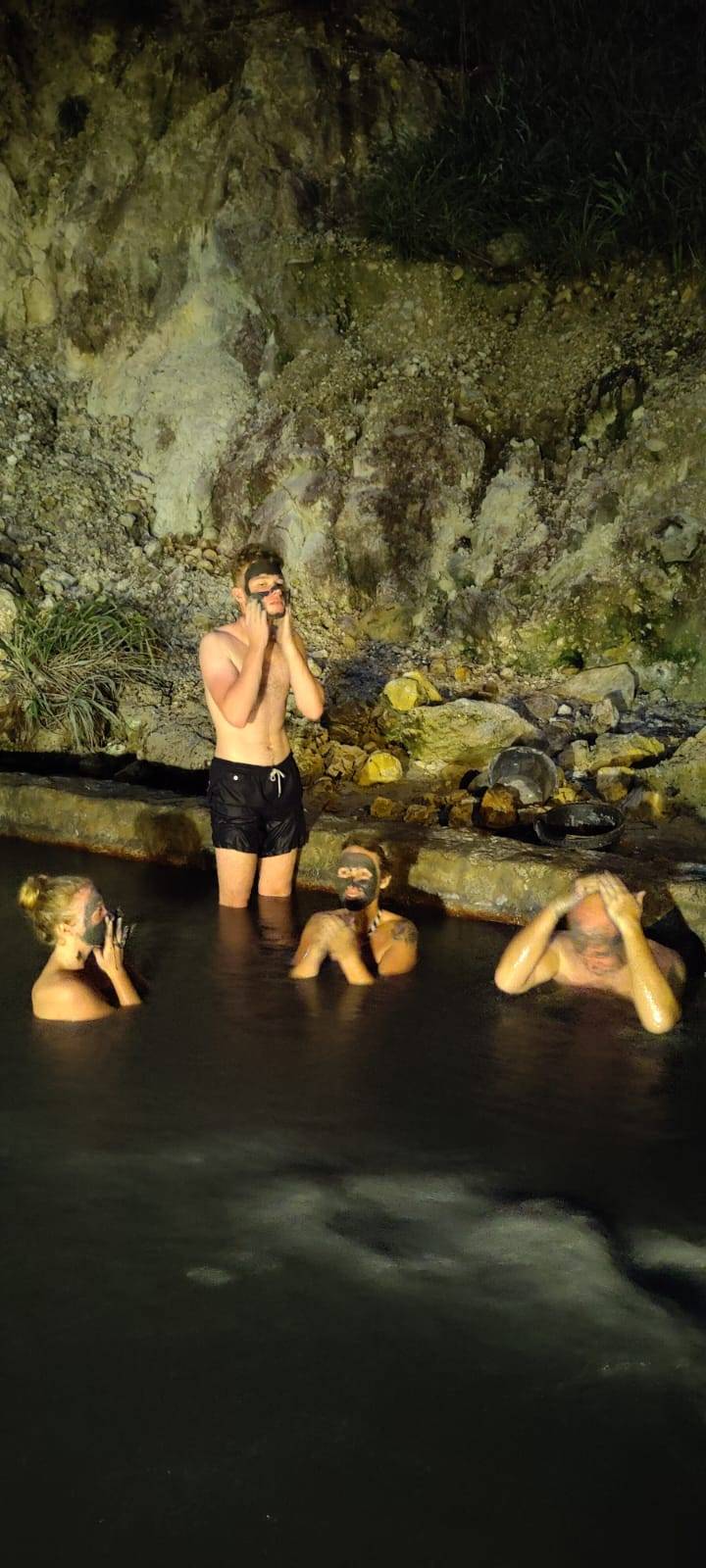
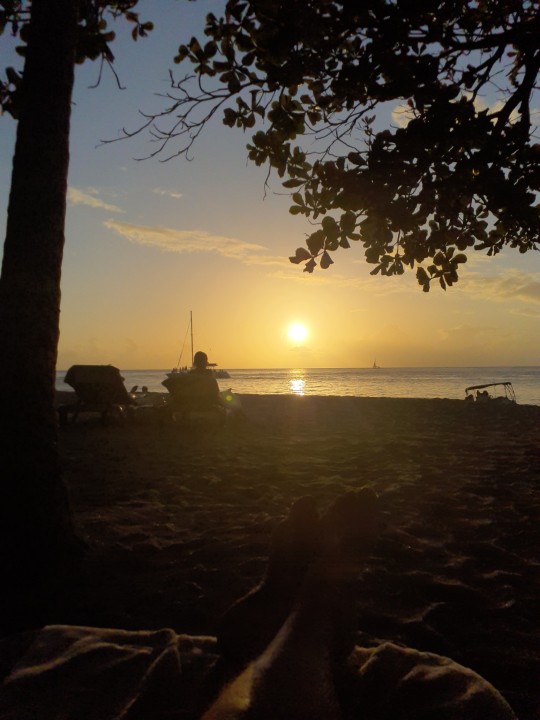

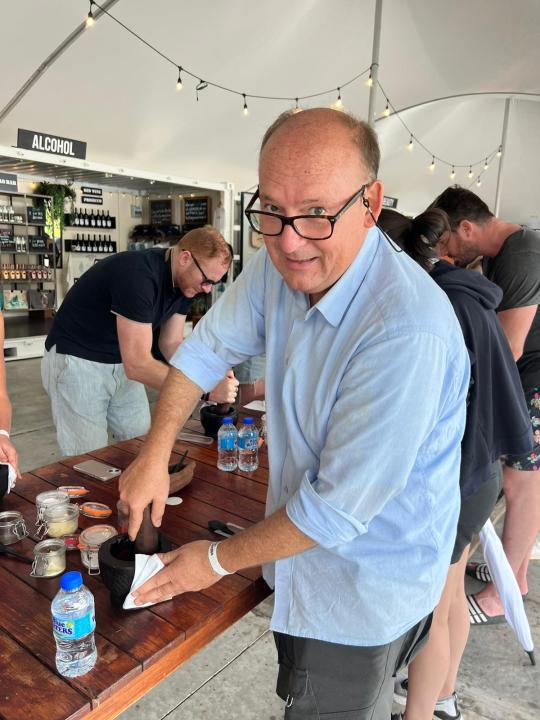
Den 2/1 åkte vi söderut med bil mot Soufriere för några dagar. En liten, vacker och mysig stad, med en massa trevligheter i närheten! Vi började med några dagar och middagar på stränderna i närheten. Men där finns mer att upptäcka: Grand och Petit Piton, zipline-färder, djungelturer, lerbad i varma vulkankällor, mineralvattensbad från varma vulkankällor, chokladtillverkning, et.c.. Allt hanns inte med men lerbad, mineralvattensbad, chokladtillverkning och en kortare hike upp på en av höjderna mellan Pitonerna blev det. Allt var välordnat och vi hade väldig tur med vädret då det sällan regnat så mycket under januari som just under dessa dagar. Chokladtillverkningen med tillhörande sticklingsodling och fabriksvandring var klart intressant!
Vi avslutade Soufrierevistelsen med en natt på ett makalöst vackert beläget hotell uppe på ett berg alldeles söder om Soufriere, Crystals Villa Hotell! Dessvärre drabbades området av tropiska regnskurar och stormbyar under natten så det blev sisådär med sömnen för sällskapet. Men trevligt hade vi ändå.
Dorningers lämnade slutligen av mig i Castries för att påbörja sin hemresa via Martinique. Själv ville jag vara kvar för några dagars båtletande på St Lucia, både digitalt men också med ett kort besök i Rodney Bay igen.
Imorgon den 8/1 blir det färja till Martinique för ytterligare båtletande men också turistande. Kanske lite mer surfande också...
#atlantsegling#segling#carribbean#sail#sailing#nyår#st lucia#rodney bay#choklad#project chocolat#chocolate
5 notes
·
View notes
Photo
Score (1974 film)
Score é um filme de romance erótico de 1974 dirigido por Radley Metzger . Um dos primeiros filmes a explorar relacionamentos bissexuais, fez parte da breve moda pornográfica chique da Era de Ouro do Pornô no início dos anos 1970, que também incluía Atrás da Porta Verde , The Diabo em Miss Jones e Garganta Profunda . O filme foi baseado em uma peça off-Broadway que teve 23 apresentações no Martinique Theatre de 28 de outubro de 1970 a 15 de novembro de 1971 e contou com Sylvester Stallone em um breve papel (como reparador de telefones Mike). A versão teatral de Score foi escrita por Jerry Douglas , que mais tarde se tornou um roteirista convencional. Foi ambientado em um cortiço pobre do Queens , enquanto o filme se passava em uma terra elegante e mítica e apresentava um orçamento relativamente alto para um filme independente daquela época.
Foi lançado em versões soft-core e hard-core. Um lançamento em DVD, uma versão soft-core, mostra uma data de copyright renovada de 1976 (todas as impressões com os direitos autorais de 1976 são a versão editada e aprovada pelo diretor), mas o filme em si foi lançado nos Estados Unidos em dezembro de 1973 As impressões hardcore, incluindo nudez frontal masculina e felação, duram 91 minutos, enquanto as onipresentes impressões soft-core foram lançadas em um formato de 84 minutos. A First Run Pictures comercializou a versão hardcore original em videocassete, embora fosse um lançamento limitado, disponível apenas por correspondência especial. A versão restaurada, sem cortes e sem censura (hardcore) foi lançada pela Cult Epics em DVD e Blu-ray em 2010.
Notas
O filme Score foi lançado durante a Era de Ouro do Pornô (inaugurada pelo lançamento de 1969 do filme Blue Movie de Andy Warhol ) nos Estados Unidos, em uma época de " porno chic ", em que filmes eróticos adultos estavam apenas começando a ser amplamente divulgados, discutidos publicamente por celebridades (como Johnny Carson e Bob Hope ) e levados a sério por críticos de cinema (como Roger Ebert ).
A música tema do estilo Yardbirds , " Where is the Girl ", foi tocada pela banda da casa no hotel onde Metzger e a equipe estavam hospedados.
Quando eu atingi a maioridade, o erotismo sempre esteve nos filmes, mas o erotismo era punido. A garota promíscua nunca conseguiu o protagonista, a mulher que vendia seus encantos, sempre teve um destino ruim. A “boa menina” sempre alcança objetivos que a menina má nunca alcança. Como reação a isso, tentei fazer o oposto. Você poderia ter uma atitude livre e se comportar de maneira livre e não ser punido. Um paralelo com isso é que também poderia ser leve. Não precisava ser uma tragédia. Você poderia olhar para [sexo] de uma forma divertida. Isso foi uma coisa pessoal, trabalhar contra os clichês do cinema quando eu era criança.
De acordo com um crítico de cinema , os filmes de Radley Metzger, incluindo aqueles feitos durante a Era de Ouro da Pornografia (1969-1984), são conhecidos por seu "design luxuoso, roteiros espirituosos e uma propensão para o ângulo de câmera incomum ". Outro crítico observou que seus filmes eram "altamente artísticos - e muitas vezes cerebrais... e muitas vezes apresentavam uma cinematografia deslumbrante ". [16] Obras cinematográficas e de áudio de Metzger foram adicionadas à coleção permanente do Museu de Arte Moderna (MoMA) da cidade de Nova York.

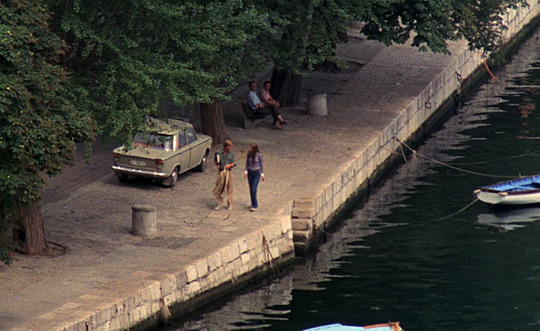
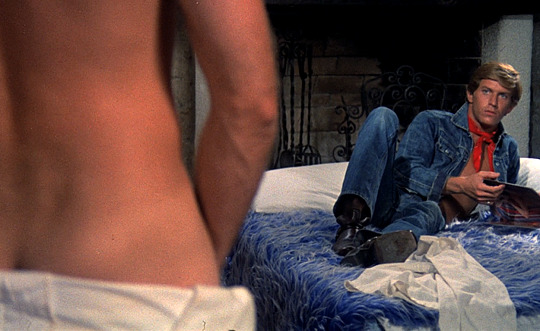
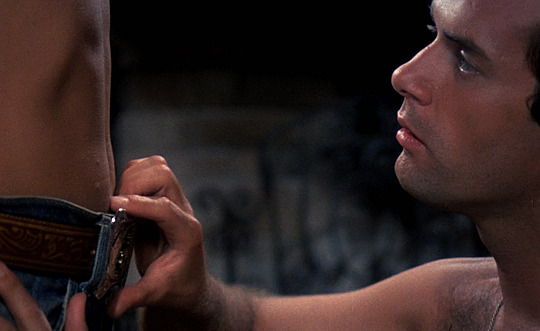



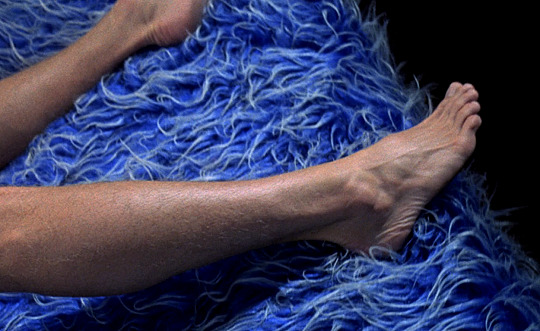

Score (1973) // dir. Radley Metzger
4K notes
·
View notes
Text
The Ultimate Guide to Island Hopping in the Caribbean

The Caribbean, a sprawling archipelago of sun-drenched islands, is a paradise for travelers seeking a mix of adventure, relaxation, and cultural diversity. Island hopping in the Caribbean is an exciting way to experience the unique character of each island. This guide will provide you with essential information to make your island-hopping journey unforgettable.
Exploring the Diversity of Caribbean Islands
The Caribbean is a mosaic of vibrant cultures, breathtaking landscapes, and rich histories. Each island boasts its own unique charm:
Jamaica: Known for its reggae music and rich cultural heritage, Jamaica offers a lively atmosphere, stunning beaches, and lush mountains.
Barbados: This island blends British colonial history with a laid-back Caribbean vibe, featuring historic sites, rum distilleries, and beautiful pink-sand beaches.
St. Lucia: Famous for its iconic Pitons, St. Lucia is a haven for nature lovers with its volcanic beaches, reef-diving sites, and rainforested interior.
Transportation: Navigating Between Islands
Traveling between islands in the Caribbean can be an adventure in itself:
Ferries: A popular and often economical way to island-hop, ferries can provide scenic journeys between nearby islands.
Flights: For longer distances or when time is a constraint, inter-island flights are available. Airlines like LIAT and Caribbean Airlines offer regular services.
Private Charters: For a more personalized experience, private boat charters are available, ideal for exploring smaller, more secluded islands.
Accommodations for Every Traveler
The Caribbean offers a range of accommodations to suit every preference and budget:
Luxury Resorts: For those seeking luxury, islands like the Bahamas and Turks and Caicos offer high-end resorts with world-class amenities.
Boutique Hotels: Many islands have boutique hotels that offer a more personalized experience, often integrating local art and culture.
Guesthouses and Villas: Ideal for budget travelers or those seeking a more authentic stay, local guesthouses and villas are available on most islands.
Savoring the Local Caribbean Cuisine
Caribbean cuisine is as diverse as its islands, with a delightful mix of flavors:
Jerk Chicken in Jamaica: A must-try, this spicy, grilled chicken dish is a Jamaican specialty.
Seafood in the Bahamas: Fresh seafood, including conch salad and grilled fish, is a staple in the Bahamas.
Creole Dishes in Martinique: Influenced by French, African, and Caribbean flavors, Creole cuisine in Martinique is a culinary adventure.
Engaging in Beach and Coastal Activities
The Caribbean is a playground for beach and water sports enthusiasts:
Snorkeling and Diving: Explore vibrant coral reefs in destinations like Belize and Cozumel, known for their exceptional underwater visibility.
Sailing: The calm, clear waters of the Caribbean Sea are perfect for sailing. The British Virgin Islands are particularly renowned for sailing adventures.
Beach Relaxation: From the white sandy beaches of Aruba to the secluded coves of Antigua, there's no shortage of picturesque spots to relax and soak up the sun.
Experiencing the Culture: Festivals and Historical Sites
The Caribbean's cultural richness is evident in its music, dance, and festivals. Participating in local events like Carnival can be the highlight of your trip. Also, explore historical sites to understand the islands' colonial past and the resilience of their people.
Experiencing the Culture: Festivals and Historical Sites
The Caribbean islands are not just about scenic beaches; they're rich in culture and history:
Festivals: Each island has its unique celebrations, like Trinidad's vibrant Carnival, Barbados' Crop Over Festival, and Jamaica's Reggae Sumfest. These festivals are brimming with music, dance, and local traditions.
Historical Sites: The Caribbean's history is a tapestry of indigenous, African, and European influences. Explore colonial forts, plantation houses, and museums to understand the complex past of these islands. Notable sites include the Brimstone Hill Fortress in St. Kitts and the UNESCO-listed Old Havana in Cuba.
Understanding the Climate and Best Travel Times
Knowing the best time to visit is crucial for an enjoyable Caribbean trip:
Tropical Climate: The Caribbean generally enjoys a warm, tropical climate year-round, making it a great destination at any time.
Hurricane Season: It's important to note that hurricane season runs from June to November. While this period can offer fewer crowds and lower prices, there's a higher risk of storms.
Peak Season: The dry season from December to April is the peak travel time, offering sunny, dry weather ideal for island-hopping.
Eco-Tourism and Environmental Responsibility
Sustainability is key to preserving the Caribbean's natural beauty:
Eco-Tourism Initiatives: Many islands are focusing on sustainable tourism. This includes eco-friendly resorts, conservation projects, and promoting awareness about preserving natural habitats.
Responsible Practices: As a traveler, you can contribute by respecting wildlife, choosing eco-friendly activities, and minimizing your environmental footprint. Participating in conservation activities, like beach clean-ups or wildlife monitoring, can enhance your travel experience.
Navigating Legalities: Visas and Entry Requirements
Each Caribbean island has its own set of visa and entry requirements:
Visa Policies: Some islands may require visas based on your nationality, while others offer visa-free entry for short stays. Always check the visa requirements well in advance.
Entry Requirements: Depending on the island, you may need to show proof of return or onward travel, accommodation bookings, and sometimes vaccination certificates.
Legal Assistance: For hassle-free travel planning, consider using services like GovAssist. They can guide you through the visa application process, ensuring you meet all the requirements for a smooth Caribbean adventure.
Island hopping in the Caribbean offers an adventure like no other, with each island presenting its unique slice of paradise. As you plan your trip, remember that preparation is key – from understanding travel logistics to respecting local cultures and environments. For a hassle-free experience regarding visa applications and legalities, consider utilizing the services of GovAssist. They can help ensure that your focus remains on the excitement and exploration of your Caribbean adventure. Happy island hopping!
Have you experienced island hopping in the Caribbean? Share your stories or tips in the comments below!
0 notes
Link
Check out this listing I just added to my Poshmark closet: NWOT Mark & Graham Martinique Banana Leaf Print Tote Bag.
0 notes
Text
Thirty minutes turned into two hours.
It was not easy to decide at that time, but now, a couple of months later, I see that there could have been no other decision.
I woke up early morning and went back to Pointe-à-Pitre. The ferry was leaving in the morning, and I couldn’t make it, so I stayed one more night there. I did nothing, only took a walk in the city. Feld a little bit weird after the sunset.
The next day was already a New Year’s Eve: 31st of December. The ferry station was a bit confusing to me: there were two lines, and the schedule showed connections to both Guadeloupe and to Martinique. In the end it turned out it’s the same ferry, and I felt stupid for not knowing this before.
We arrived to Roseau a couple of hours later, probably around noon. I went to the hotel, and luckily the room was already available. I checked in and then I went for a walk around the town. There was not much there.
I started again to worry and to try to decide whether I should go somewhere else. A very long time I’ve been to Portsmouth, which is around 44 km drive - this is 30 in a straight line, but Dominica is mountainous, and the road follows the coast. There was an awesome bar there called “Chez Felix”. I wanted to go there and watch the sunset, but I wasn’t sure how to get there and - more imporantly - how to get back. I’ve read about the public transport, but it was not easy for me to understand how exactly does it work, e.g. what are the bus routes.
I’ll write down the rest some time later.
0 notes